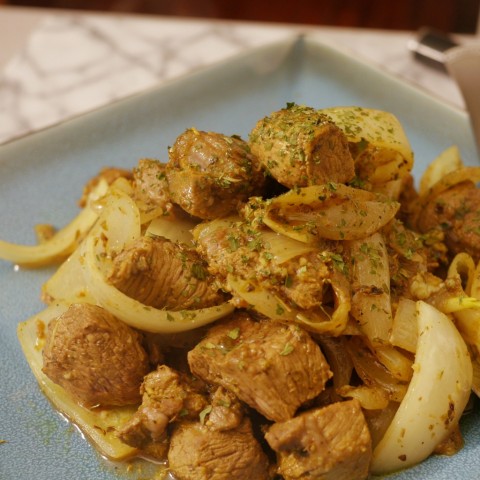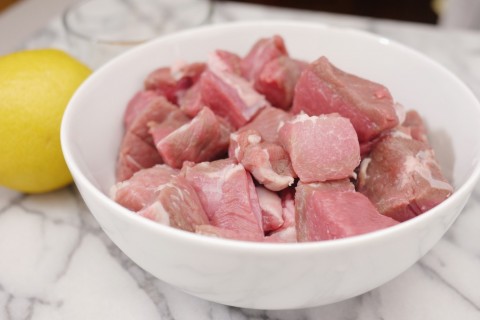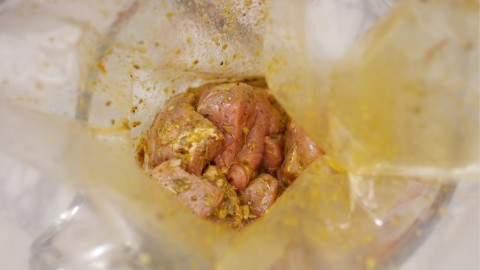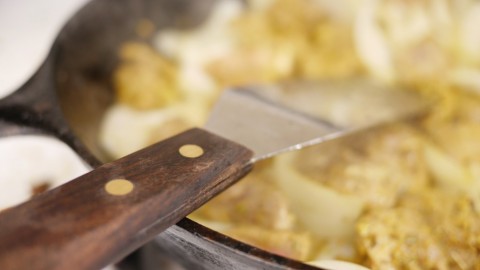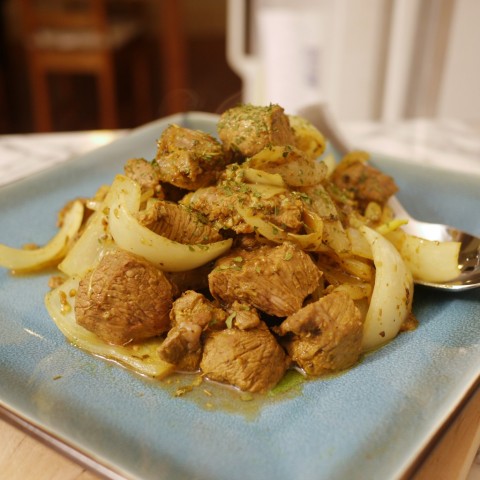Passover is coming next week, and it is about nothing — culinarily speaking, of course — if not lamb. Sure, the matzoh takes the prize as the most distinctive Passover food, all dry and crunchy — and delicious, so long as you don’t have to eat it exclusively for seven days. And sure, the horseradish wins in the category of “why is this night different from all other nights.” But before you go barging off to make your Hillel sandwiches, consider this: a seder isn’t a seder at all — literally — without the lamb.
Look at your bible. Exodus 12. It’s all right there.
We’re nine plagues in, see, and God’s all like: I’m going to harden Pharaoh’s heart one more time. So He tells His people — the Israelites, who’ve been waiting around, checking their watches, while God’s been teaching the Egyptians lessons — that this is what they have to do: slaughter a lamb at twilight, He tells them, on the fourteenth day of the month. Share one with a neighbor if a whole lamb is too much to eat. But the important thing, He says, is that you’ve got to take some of the blood and put it on the two doorposts and the lintel of the house in which you plan to eat it. That way, you get a delicious, roasty, savory meal. With the added bonus that when the angel of death comes knocking, looking for firstborn sons, he’ll know not to mess with you.
It’s kind of a gruesome story, really, when you think about it. The Israelites are commanded to party down on their last night in captivity, sheltered well away from the action while the angel of death comes en masse for their neighbors.
In step five of the seder, we make a show of remembering that fact — that the Egyptians suffered for the cause of Israelite freedom — by dripping ten drops of wine from our glasses. But what’s ten drops among (at least) four glasses? It’s “pouring one out for the homies,” to borrow a phrase from my friend Sarah. But just barely.
The thrust of the celebration is that — all thanks to a lamb — death passed us over.
So like I said: lamb is essential. It’s a fixture on the seder plate. It’s traditionally the centerpiece of the Passover meal. And — and it gets not nearly enough attention.
Part of the problem, like I said before my biblical detour, is that the lamb is overshadowed by the odder foods of the seder like the matzoh and the horseradish. But part of the problem is that the meal itself isn’t really the point of the seder. It doesn’t come until step eleven, after you’ve already drained (at least) two cups of wine, and after you’re all pooped out from the singing, and the storytelling, and the discussion of wicked children (I have no good link for this; if you don’t know what I’m talking about, click on this DuckDuckGo search).
By the time you eat, it’s often getting on toward ten in the evening. Everybody is checking their watches, worried about finishing by midnight (you simply must finish by midnight). And often, there has to be a choice: do we invest in enjoying the Passover meal? Or do we rush through it so that we can get to those last four steps before the hourglass runs out?
So really, the optimal Passover meal is the one that will allow you to do both: a meal that is quick to make and quick to eat, that is delicious, and that will allow you to get onto step twelve in a timely fashion.
And that’s where the cumin lamb comes in. Cumin lamb takes its culinary cues from several traditions around the world, including Middle Eastern — and specifically Israeli — cooking. A leg of lamb, rubbed with cumin and slowly roasted, perhaps on a grill over an open flame, is delicious, and I’m sure much beloved.
But it’s also kind of slow. There’s the cooking time, for one thing. But beyond that consideration, it needs to be carved at the table then cut up on the plate. And that all takes precious time.
Not so for my cumin lamb. This recipe takes inspiration, too, from the kebab tradition, where the meat is pre-cut — in this case, into bite-size chunks — before it even goes into the marinade. One advantage of this is quickness at the table. But even better: it’s quicker to prepare, and the flavors of the marinade penetrate much more deeply into the meat.
If you wanted — if it’s warm enough and not pouring rain (like it was here) — you could easily put your lamb on skewers and grill it in the traditional kebab style. But if you’re like me, and you live on the East Coast, and the weather is still a little chilly for that, dropping the meat chunks into a smoking hot cast iron skillet will do the trick, too.
Either way, this version of cumin lamb is delicious. It’ll make your seder guests ooh, and ahh, and think to themselves: hey, maybe step eleven is a little important, after all.
1.5 lbs Boneless Leg of Lamb, cut into smallish cubes
1 Onion, in coarse slices
3 Cloves of Garlic, crushed and minced
1.5 tsp Oregano
1 tsp Ground Cumin (heaping)
.5 tsp Turmeric
Juice of 1 Lemon
Olive Oil
Pepper
Salt
To a gallon-sized plastic bag, add the pepper and salt, the garlic, oregano, cumin, and turmeric, the lemon juice, and a generous quantity of olive oil. Mix well and add the lamb cubes. Make sure that the lamb cubes are all well coated in the marinade, then seal the bag and refrigerate for at least four hours.
At the end of that time, remove the lamb cubes from the bag and pat them dry with paper towels. Heat a cast iron skillet over a high flame, add a measure of olive oil, then add the sliced onions and let them cook for about two minutes, just until their edges are starting to brown.
Add the lamb cubes to the skillet, and allow the whole thing to cook for about five minutes more, stirring only occasionally. You’ll know it’s done when the cubes are just a little bit browned on the outside, and when — sliced open — the inside is still slightly pink.
Serve immediately, piping hot, next to roasted vegetables and matzoh.
(This recipe can easily be doubled, or even tripled, for your giant family’s giant Passover seder.)
Update: Apparently, for lots of folks in the Ashkenazi Jewish tradition, lamb is considered inappropriate for the Passover meal because it might be confused with the Passover sacrifice. Though my heritage is indeed Ashkenazi, I have never heard of, or practiced this prohibition. And I find myself a little bit confused by it, in fact, seeing as how Exodus is pretty clear that the lamb is meant to be eaten. If this prohibition is part of your tradition — by all means honor it. Make this cumin lamb tonight, instead, and enjoy it wrapped in pita, with tzatziki and hot sauce.
